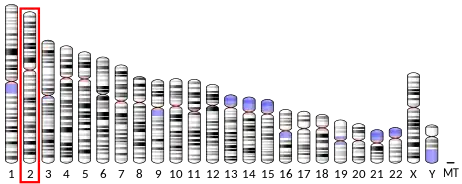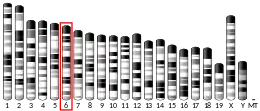| EXOC6B | |||||||||||||||||||||||||||||||||||||||||||||||||||
|---|---|---|---|---|---|---|---|---|---|---|---|---|---|---|---|---|---|---|---|---|---|---|---|---|---|---|---|---|---|---|---|---|---|---|---|---|---|---|---|---|---|---|---|---|---|---|---|---|---|---|---|
| Identifiers | |||||||||||||||||||||||||||||||||||||||||||||||||||
| Aliases | EXOC6B, SEC15B, SEC15L2, exocyst complex component 6B, SEMDJL3 | ||||||||||||||||||||||||||||||||||||||||||||||||||
| External IDs | OMIM: 607880 MGI: 1923164 HomoloGene: 44781 GeneCards: EXOC6B | ||||||||||||||||||||||||||||||||||||||||||||||||||
| |||||||||||||||||||||||||||||||||||||||||||||||||||
| |||||||||||||||||||||||||||||||||||||||||||||||||||
| |||||||||||||||||||||||||||||||||||||||||||||||||||
| |||||||||||||||||||||||||||||||||||||||||||||||||||
| |||||||||||||||||||||||||||||||||||||||||||||||||||
| Wikidata | |||||||||||||||||||||||||||||||||||||||||||||||||||
| |||||||||||||||||||||||||||||||||||||||||||||||||||
Exocyst complex component 6B is a protein that in humans is encoded by the EXOC6B gene.[5]
Function
In yeast and rat, Sec15 is part of a multiprotein complex that is required for targeted exocytosis.[5]
References
- 1 2 3 GRCh38: Ensembl release 89: ENSG00000144036 - Ensembl, May 2017
- 1 2 3 GRCm38: Ensembl release 89: ENSMUSG00000033769 - Ensembl, May 2017
- ↑ "Human PubMed Reference:". National Center for Biotechnology Information, U.S. National Library of Medicine.
- ↑ "Mouse PubMed Reference:". National Center for Biotechnology Information, U.S. National Library of Medicine.
- 1 2 "Entrez Gene: Exocyst complex component 6B".
Further reading
- Brymora A, Valova VA, Larsen MR, Roufogalis BD, Robinson PJ (August 2001). "The brain exocyst complex interacts with RalA in a GTP-dependent manner: identification of a novel mammalian Sec3 gene and a second Sec15 gene". The Journal of Biological Chemistry. 276 (32): 29792–7. doi:10.1074/jbc.C100320200. PMID 11406615.
- Feng S, Knödler A, Ren J, Zhang J, Zhang X, Hong Y, Huang S, Peränen J, Guo W (May 2012). "A Rab8 guanine nucleotide exchange factor-effector interaction network regulates primary ciliogenesis". The Journal of Biological Chemistry. 287 (19): 15602–9. doi:10.1074/jbc.M111.333245. PMC 3346093. PMID 22433857.
- Wen J, Lopes F, Soares G, Farrell SA, Nelson C, Qiao Y, Martell S, Badukke C, Bessa C, Ylstra B, Lewis S, Isoherranen N, Maciel P, Rajcan-Separovic E (July 2013). "Phenotypic and functional consequences of haploinsufficiency of genes from exocyst and retinoic acid pathway due to a recurrent microdeletion of 2p13.2". Orphanet Journal of Rare Diseases. 8: 100. doi:10.1186/1750-1172-8-100. PMC 3710273. PMID 23837398.
- Borsani G, Piovani G, Zoppi N, Bertini V, Bini R, Notarangelo L, Barlati S (2008). "Cytogenetic and molecular characterization of a de-novo t(2p;7p) translocation involving TNS3 and EXOC6B genes in a boy with a complex syndromic phenotype". European Journal of Medical Genetics. 51 (4): 292–302. doi:10.1016/j.ejmg.2008.02.006. PMID 18424204.
This article incorporates text from the United States National Library of Medicine, which is in the public domain.
This article is issued from Wikipedia. The text is licensed under Creative Commons - Attribution - Sharealike. Additional terms may apply for the media files.



